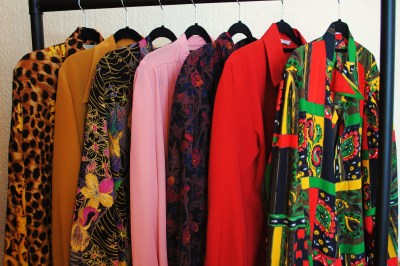Enter the shop and you are greeted with the sight of bland indifference. You haven’t even noticed the window displays, mannequins used purely as a place to hang garments and no long their original function.
Is there a strategy in the madness of product placement or is the goal to display as many items as possible; it appears to be the latter. You are barged by the collection of fellow customers comprising mostly of unemployed or minimum wage earning members of society; this store does not contain the ettiquette of other high street establishments.
Apparel from charity shops carries with it a stench frighteningly reminiscent of the elderly shut in man who it most likely belonged to before his tragic demise. Other than this kind of fairy tale the clothing has also been worn out by its previous owner and is most definitely unwanted as opposed to haven’t been worn lately.
The difference between charity shop clothing and high street franchise clothing is most apparent to those beholding it. Some would rather not be associated with charity shops unless trying to save money while seeking branded items — which are few and far between.
Fast forward a decade or so and your setting has changed somewhat. Window displays and the artistic theory behind them are now a lot more apparent; an individual has clearly put some thought into outfit choices and colour palettes when dressing this hypothetical person.
You either witness a rainbow of fabric or a logical collection of items displayed with the needs of the customer in mind. The kind of clientèle has changed to include hipsters and high class middle aged women. It is now fashionable to shop here and to broadcast the origin of your elclectic outfit; we enjoy the shock on the faces of our acquaintances when an item they have complimented is not in fact from a high street store.
You’ll find faces of deep concentration as charity shoppers are intent on finding the piece that looks the most expensive amongst the £2.99 branded t-shirts. Instead of this clothing being worn to within an inch of its life by the previous owner it is an unwanted Christmas present or donation. There is no unpleasant smell of items that have been left in the stock room of the store for years at a time, these things move too quickly off the shop floor to pick up any odour. If anything they now carry the fragrance of the washing powder that was used to clean them before being sold.
So, there you have it, the journey from last resort clothing to fashionable shopping escape. I can only imagine that this comes from the creation of the hipster social group and the false belief that any fashion trend enjoyed by the younger members of society is new and exciting. The truth? Trends recycle. You’ll find that perfect garment, one that may have previously belonged to an elderly woman.

